To celebrate their fifteenth anniversary, the Douro Boys have created a red wine and a vintage Port from the outstanding 2017 vintage, both blended together from their individual estates. These two unique wines were launched on 11 October as items in an auction, where the average price was 295€ for a magnum.
With a name that conjures up a perfectly-preened 90s teen band, the reality of the Douro Boys presents a rather different picture. For a start, these five producers – working together to build their region’s profile – are not ‘boys’: they are fully fledged men, none of them spring chickens. If they are setting any pulses racing, it is more likely to be with their wines. Talk to any of them about why they are together and it becomes immediately clear that each member has an ethos that is different, but a spirit that is shared.

The original members – representing Quinta Vale D. Maria, Quinta do Vallado, Quinta do Crasto, Quinta do Vale Meão and Niepoort – first mooted the idea of working together at the turn of the millennium, but it wasn’t until four years later that the Douro Boys were officially launched into the world.
As they gathered together for a fundraising auction – primarily to raise money for marketing the region, but also benefitting a local charity for children – the venue, the luxurious Six Senses hotel, represented a symbol of the confidence the breathtakingly beautiful Douro Valley now feels as it attracts upmarket visitors.
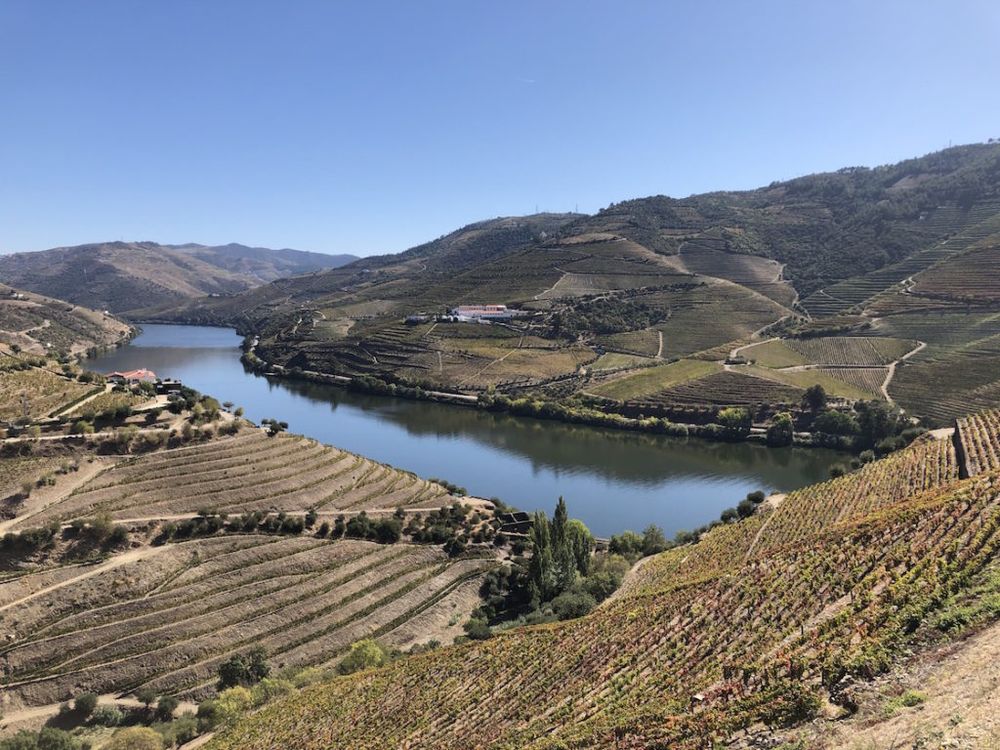
“At the start, the idea was just to do something for the Douro”, says Dirk Niepoort, with a shrug, “we were just five producers making different styles of wines, who felt we could achieve more together”.
“There was no particular commercial side to the Douro Boys being the Douro Boys”, says Cristiano van Zeller at Quinta Vale D. Maria, “we were just looking at innovative ways of promoting the place and bringing people to our wines”.
If that sounds modest, even slightly underwhelming, then what they have achieved is quite the opposite: it is said that they have done more for the Douro in fifteen years than Portugal has managed in fifty.
Getting to know the Douro Boys:
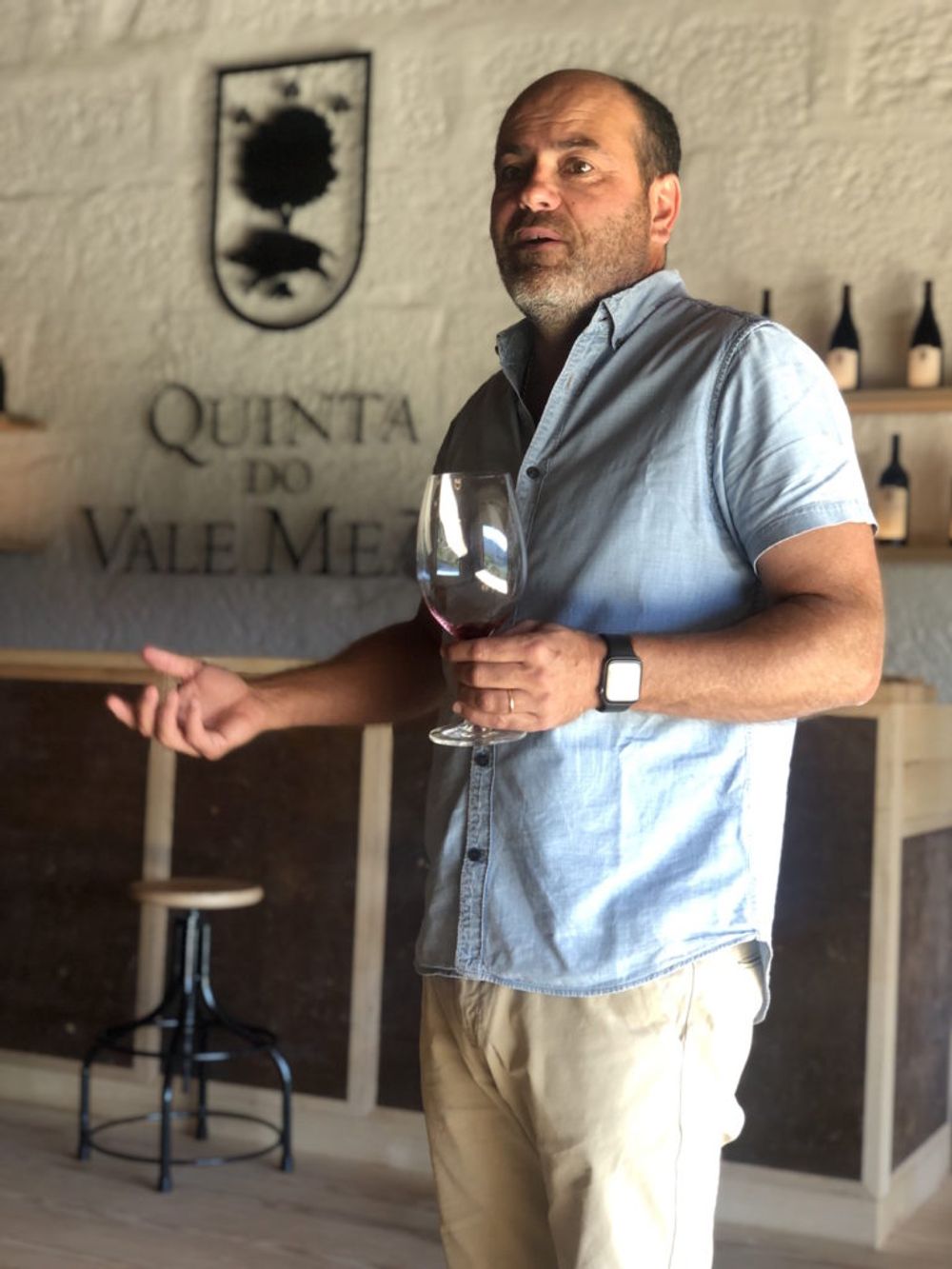
Francisco Olazabal
High in the Douro Superior, close to the Spanish border, where the summer is stifling and winter can be vicious, ‘Quinta Vale Meāo’ was the last project for Antonia Adelaide Ferreira, known as ‘Dona Antonia’, a female pioneer and one of the great names of the 19th century Port industry.
Now in its fourth generation of family ownership, Francisco Olazabal oversees an estate of around 100 hectares, much of it on slopes of granite, with production of around 260,000 bottles per year. Port wine is around 20 percent of its business.
“Altitude is not so important in the Douro,” Olazabal says, counter-intuitively, “grape variety is most important here, then it is aspect, as it really depends which way you are facing, and then it’s a matter of choosing the right picking dates.”
Quinta Vale Meāo has pioneered Baga in the region, having been among the first to plant the late-ripening, tannic, sometimes astringent variety that thrives in the Upper Douro’s continental climate. Olazabal predicts plantings will increase: “I have friends and neighbours who are now choosing to grow Baga.”
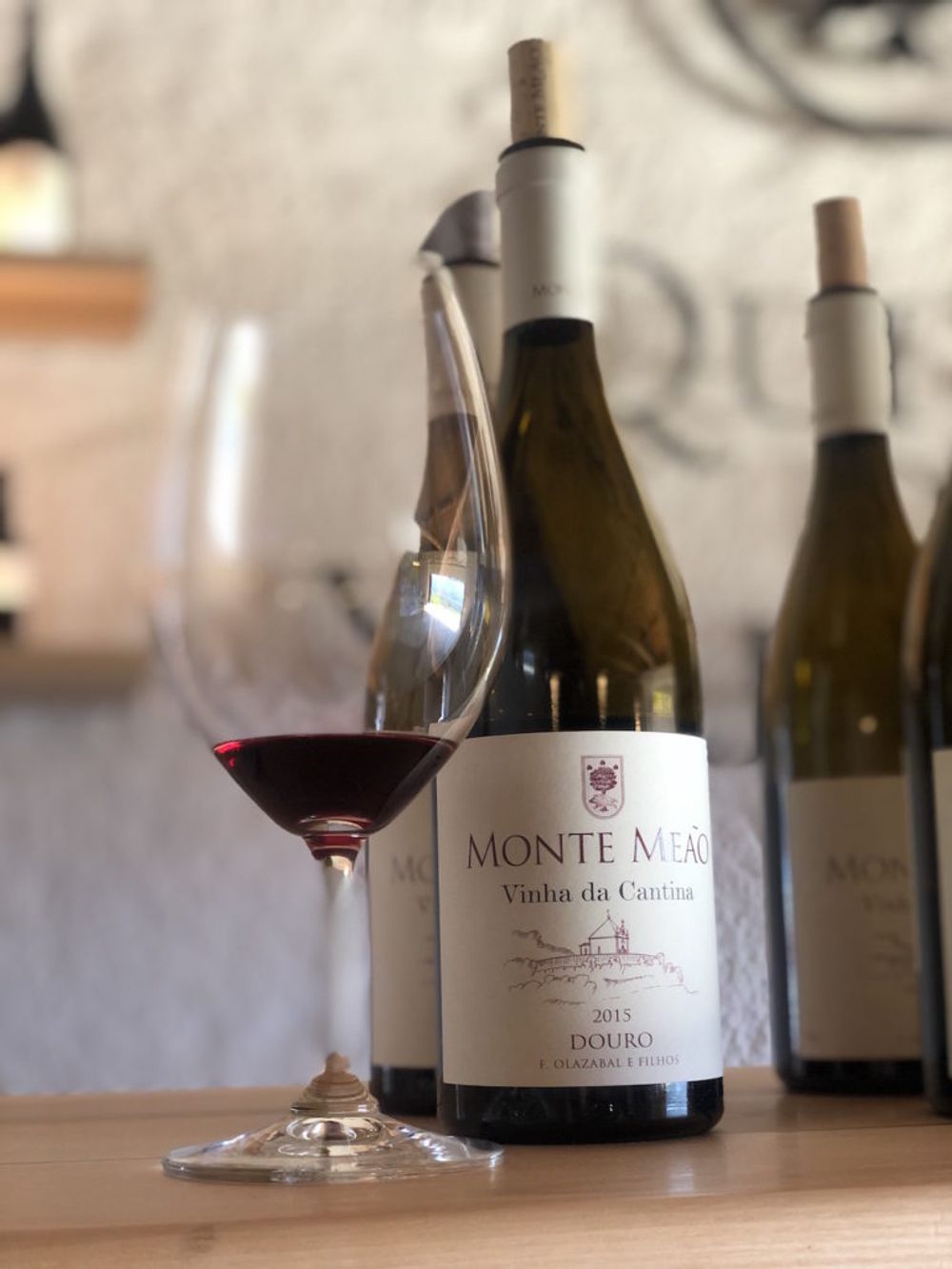
Quinta do Vale Meāo Vinha da Cantina 2015 highlights Baga’s great potential in the Douro Superior. Made with 50 percent whole bunch fermentation and aged in 500 litre barriques, it boasts a complex nose of forest fruits, saffron, garrigue and chestnut mushroom, a spicy elegance and note of tension, with a mere 12 percent alcohol.
Further down the valley, standing proud on a peninsula as the Douro snakes around it, 100 metres below, ‘Quinta do Crasto’ is run by brothers Tomás and Miguel Roquette. Close to the quinta itself, on the steep slopes leading down to the river, the Maria Teresa vineyard has been painstakingly mapped, with each vine given its own GPS co-ordinate, its individual genetic make-up analysed, so that individual elements of this historic field blend can be replaced like-for-like.

“We risked losing the character that defines this wine,” Miguel Roquette tells me, “so far we have confirmed 49 individual varieties, but soon it will be more than 50 as we are still working on the project.”
The 250 hectare estate runs up to more than 600 metres, with indigenous white grape varieties including Arinto, Gouveio and Rabigato planted at the top to maximise the potential acidity, the vines frequently sitting above the clouds. Some of the stone terraces have lain derelict since phylloxera, too costly to work, but many are being brought back to life as the region recovers.
Age is revered here, reflected in the quality of the Quinta do Crasto Reserva Vinhas Velhas 2015, a veteran field blend that has sun-baked mountain herbs, blackberries and spice, opening up on the palate like an Ordnance Survey map to reveal complexity and well-tamed tannins.
Almost opposite Quinta do Crasto, ‘Niepoort’ is the biggest of the Douro Boys, in terms of production, at two million bottles. Founded by Dutch pioneer Francisco van der Niepoort in 1842 and now run by great-great-grandson Dirk, Port accounts for around a third of its output, with Niepoort having been one of the first to make high-quality commercial wines in the Douro.
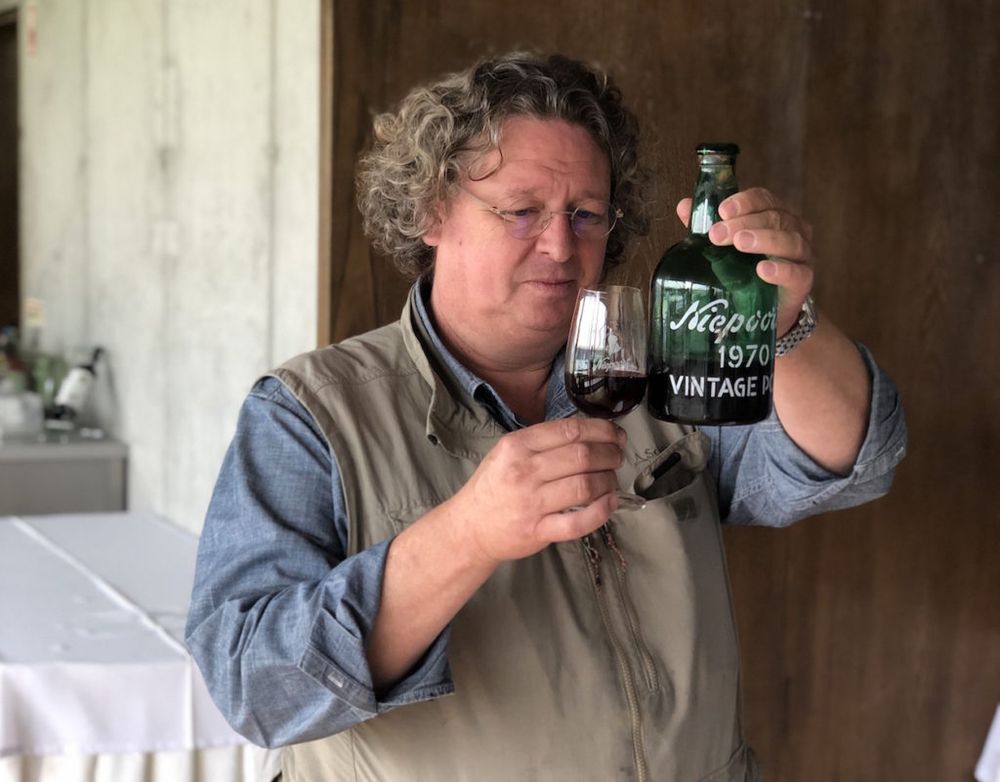
“You can’t mess with amphora, you just close the top and believe in God.” Dirk Niepoort
“It’s hard to believe, but 30 years ago there was no wine of any significance made in the Douro,” Niepoort reminds us.
The focus is on individual vineyard plots, rather than varietal wines, with Niepoort’s own sites recently certified organic. Experimentation is encouraged, with the latest project a series of beeswax-lined terracotta amphora, producing an elegant and unusual wine that mixes red and white field-blended grapes. “You can’t mess with amphora,” he says, “you just close the top and believe in God. If you keep opening it, to interfere, it will be vinegar.”
Although the company was a pioneer in still wine, its reputation probably rests on its Port, which Niepoort says is “all about balance.” Niepoort 2005 Vintage Port is still a little closed, but its evolution is enticing, with precise red fruit, elegant tertiary flavours of leather and smoky spice and fantastic integration of its relatively discreet alcohol. Niepoort confesses that his decision to declare in ’05 raised a few eyebrows, but he says is it now one of his favourites.
On the Corgo river, a tributary of the Douro, cousins Francisco Ferreira and João Alvares Ribeiro own ‘Quinta do Vallado’, the second biggest of the Douro Boys’ properties. With a mix of traditional high-density vines, at up to 8,000 per hectare, and new trellised plots at just 3,000, the altitude ranges from 80 metres to 400.
“In the Douro, when we talk about old vines, or new vines, we are really using the term to differentiate between different systems,” Ferreira tells us, “new vines are not necessarily that young, they can be 25 years old. It is not true that old vines necessarily produce great wines either, as some old vine grapes can be horrible.”
Dona Antonia once owned this quinta too, and her great-great-grandson Francisco Olazabal’s reach also extends here, as consultant winemaker. There is an impressive selection of single varietal wines, including the celebrated Touriga Naçional and the distinctive, sometimes screamingly acidic, Sousāo (also known as Vinhāo in the Minho region). “Sousāo has incredible ageing potential, as the freshness remains and the tannins become rounder,” Ferreira says.
Quinta do Vallado Sousāo 2015, fermented in Port lagares, radiates rusticity, with vibrant blackcurrant and balsamic notes, leading into a fresh, focused, electrifying palate that might divide opinion. For the record, I loved it.
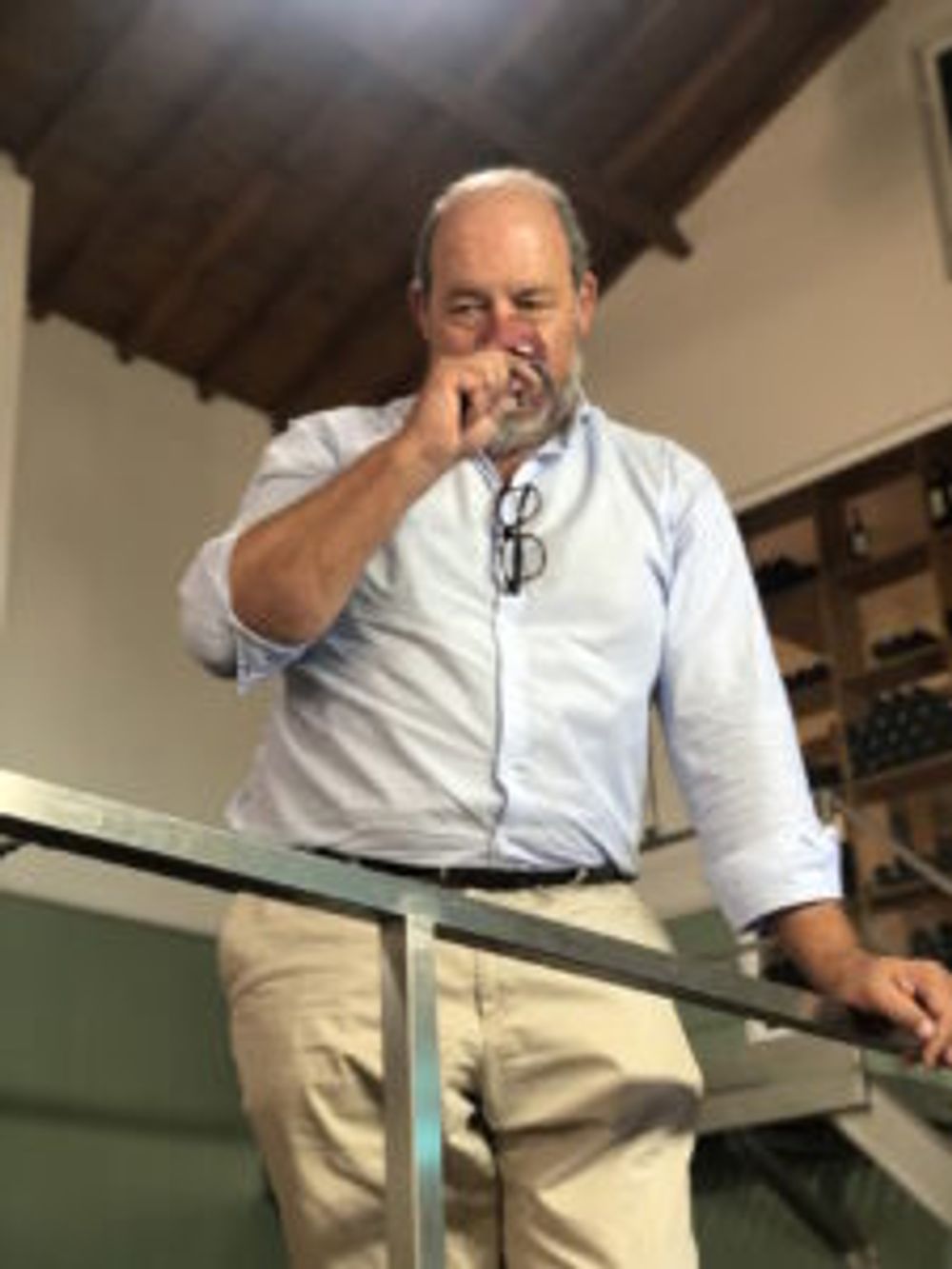
Cristiano van Zeller
It can feel as if there are more family trees than cork trees in the Douro, thanks to its famous family dynasties, and the charismatic, baritone-voiced, Cristiano van Zeller at Quinta Vale D. Maria is a case in point. The van Zellers can trace their roots in the region to the 18th century, having at one time owned Quinta do Noval, and there is also an historic link to the Symington family. Two years ago Quinta Vale D. Maria was sold to the mighty Sogrape group, so van Zeller sits on the board, whilst also reviving his familial van Zellers label as a solo project.
One of the region’s biggest figures, van Zeller is actually the smallest of the Douro Boys when it comes to production, having painstakingly restored the historic vineyards he took on when he married his wife Joana. He is passionate about the region’s diversity, which he likens to Burgundy with “every little corner producing a different style.”Van Zeller boasts of a “reverse pyramid” of wines, with one entry-level for each colour and a broader range at the higher end.

Van Zeller’s ‘CV’ range was created with his Curriculum Vitae in mind and not, he insists, “as an attempt to put my initials on the bottle.” The CV Douro White 2014, a field blend of at least 10 varieties, is a fascinating feast of citrus, green herbs and white pepper with a pleasing oxidative note that resembles a delicious ageing Semillon.
So what next for the Douro Boys? They do not plan to expand their band beyond the core founding five, nor to extend their ambition beyond more of the same, building the region’s profile. The Douro is now well and truly on the world map for its wines, so the Douro Boys have arguably given us their greatest hits.
David Kermode is a freelance writer, BBC broadcaster and consultant with his own website www.vinosaurus.co.uk
































